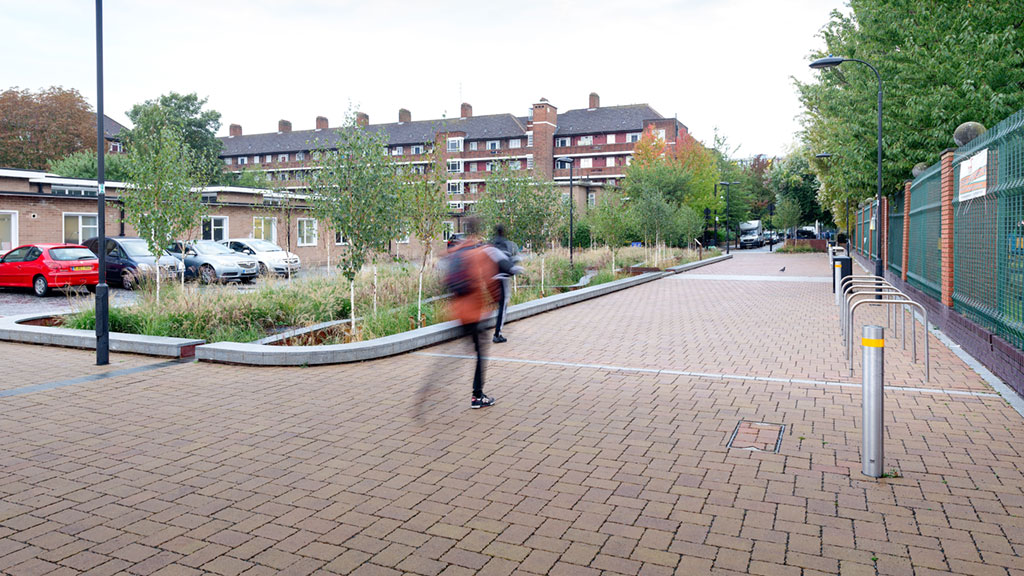Protecting our Environment with Permeable Paving

A recent GLA report highlights the damage caused by vehicle pollution in road and surface water drainage to our rivers and streams. Concrete block permeable paving offers the obvious starting point to address this growing problem.
Pollution is present and can build up on all hard surfaces used by vehicles (including electric), from motorways to driveways. This major problem results from tyre or brake wear, oil or fuel leaks, dust from the atmosphere and other sources. Rainfall washes this diffuse pollution off the surface, carrying trace metals, hydrocarbons and – potentially – more than 300 different pollutants.
Of course, conventional drainage systems using road gulleys and pipes do not remove any pollution or attenuate water flows. In fact, conventional drainage systems, as well as attenuation tanks, effectively concentrate these pollutants, which are then flushed directly through the drainage system during rainfall.
Although the ‘combined’ (foul and surface water) sewers found in our older urban centres convey these pollutants to treatment plants, some pollutants are still not addressed and, during times of high rainfall, untreated water may surcharge directly into watercourses. However, dedicated ‘surface water’ and highway drainage is more worrying, as it generally passes directly to watercourses or groundwater without any effective treatment at all. It has been used widely throughout our more recent suburban areas and on new developments.
The long- and short-term damage caused by pollutants in surface water drainage to the biodiversity and health of our rivers and streams is highlighted in the Greater London Authority ‘Road Runoff Water Quality Study’ (December 2019). It concludes that: “London’s roads are harming London’s rivers” and proposes research into the addition of SuDS features to manage runoff pollution from the most damaging roads.
There is a wealth of research available from around the world showing that concrete block permeable paving is particularly effective at removing the main pollutants of concern – i.e. total suspended solids, hydrocarbons and metals. It also attenuates runoff during storms for later, gradual release to other drainage. Its application as a multifunctional source control within our streetscapes presents an obvious solution to the growing problem of vehicle pollution – whether retro-fitted in place of existing paving or designed-in to new developments.
Find out more about concrete block permeable paving here.
